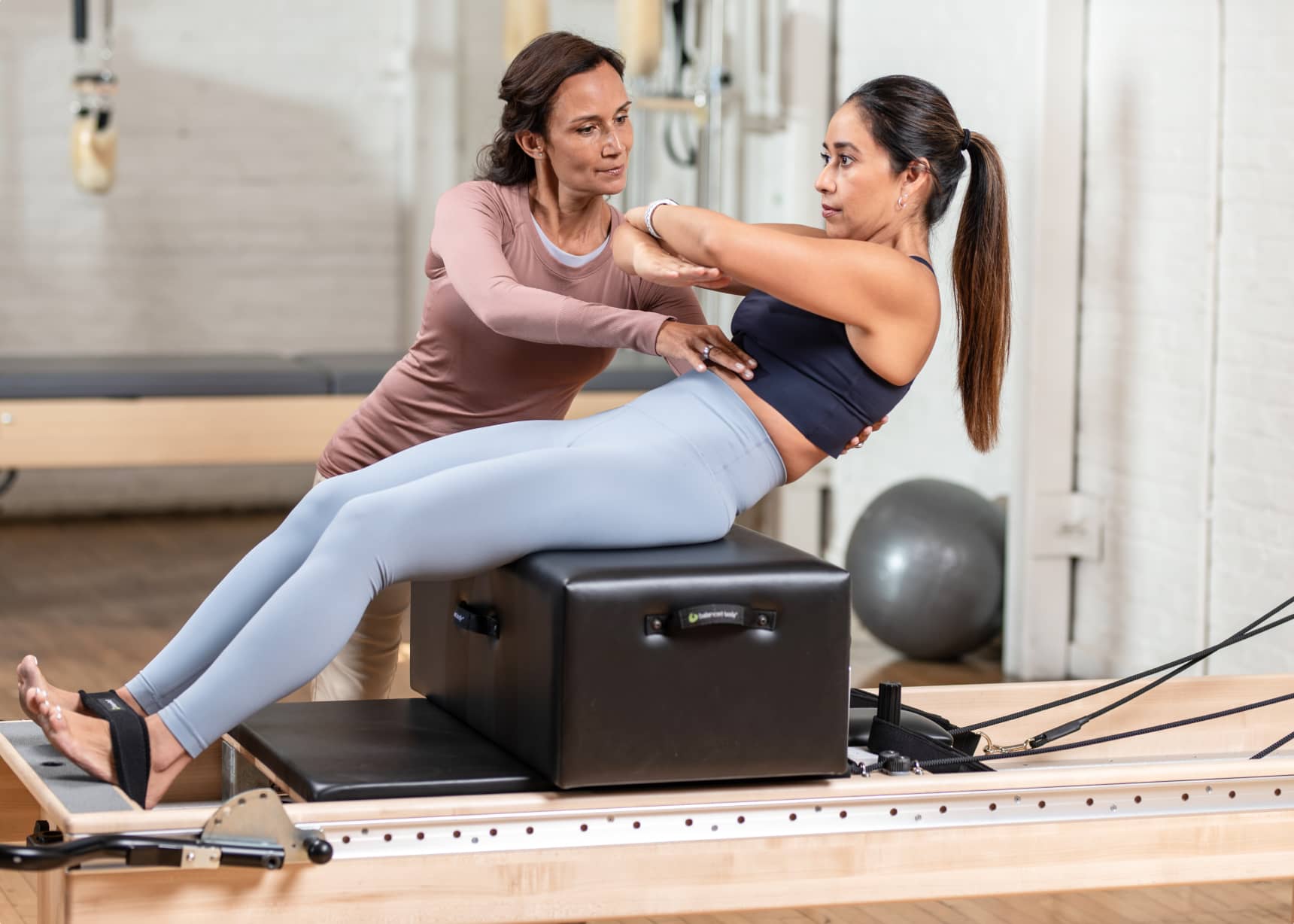Cancer Survivors:
Pilates and an Improved Quality of Life
Cancer Survivors:
Pilates and an Improved Quality of Life
By Dr. Joseph Camp
Pilates exercise accompanying treatment for cancer is steadily gaining acceptance in the fitness community. Safe and supportive programs are improving the quality of life for cancer survivors. The physical and psychological benefits of Pilates can aid in the rehabilitation and recovery of those with cancer.
As clients, cancer survivors often present with muscle weakness, limitation of movement, and pain. Pilates exercises allows this special population to lie supine and relaxed and reintroduce movement at any stage of recovery. The specific movements are dependent on the individual’s type and stage of cancer and recovery.
Physiological benefits are improvement in muscular strength and endurance, postural enhancement, increased range of motion and better ability to perform activities of daily living.
Clients reported psychological benefits such as mood elevation, improved body awareness, a renewed focus on wellness and less dependence on others.
Pilates for Cancer Survivors Case Study
At the age of 61, Yvonne L. was diagnosed with uterine or endometrial carcinoma and cancer of the cervix. She was successfully treated at Stanford Hospital in California and had just celebrated her five-year anniversary of being cancer free.
Yvonne was referred by one of her close friends to my studio, Lift Fitness in Mountain View, CA. At this point Yvonne was in the middle of going through the process of regaining her health after having survived her two separate primary cancer diagnoses and treatments. Her state of health at this time was delicate.
Cancer Patient Exercises
Due to the invasive nature of her two surgeries, Yvonne had a loss of muscle strength and limited range of motion, with the abdominals being primarily affected. Pilates Reformer exercises were chosen that introduced working in a neutral spine position to maintain the natural curves and strengthen the muscles essential for postural support. Extension exercises were progressively added to develop fluid motion in the spine and to strengthen the back, glutes and hips. Lateral and rotary movements were eventually used to encourage muscular support while managing pelvic stability.

Yvonne was also at risk for developing lower extremity lymphedema. Lymphedema is chronic unilateral or bilateral swelling of the extremities caused by the obstruction of the lymphatic vessels. Since surgical disruption from lymph node removal was a potential factor, precautions were taken. Pilates exercises that were helpful in Yvonne’s case were hip lifts and leg circles. The correct use of breath is also effective for moving fluid through a gentle pumping action of the abdominal muscles.
Pilates Results
Yvonne’s health steadily improved as she developed basic Reformer skills. She was soon working independently on both mat and apparatus.
Now at 66 years of age, Yvonne’s friends tell her she moves the way she did when she was a much younger woman pursuing an active life. In her own words she describes what Pilates has done for her:
The diagnosis of cancer destroyed the trust that I has in my own body and it left such debilitating physical and emotional scars that it took time to repair that damage. At my lowest point, I was limited to movements on the Pilates Reformer and I cannot think of another form of exercise that I could have undertaken with as much confidence. As I began to strengthen physically and feel better about myself and my body, I decided that I wanted to share this experience with other cancer patients.
When I now perform short spine or teaser exercises it is difficult to remember that a few short years ago I had to hang onto the car handle above the passenger seat every time we turned a corner. My abdominal muscles were so weak that I could not stabilize myself without assistance. Pilates has been an instrumental part of my rehabilitation. It’s truly been a miracle for me.
Yvonne continued her Pilates training at Lift Fitness, supplementing that with other complementary exercise programs offered to cancer survivors by Stanford Hospital’s Supportive Care Program. She has also been studying to become a certified Pilates instructor so that she might share her experience with other cancer patients and to promote use of Pilates in rehabilitation within other cancer centers.
Inspired by her success I was encouraged to contact Holly Gautier, RN, BSN Director of Cancer Concierge Services at Stanford Cancer Center. To my delight, Lift Fitness was added to the supportive care program.
The extension program classes for cancer survivors offered at Lift Fitness are going great. We limit the classes to small groups of four in order to tend to each person’s needs. We’re able to vary the intensity of the exercise based on the individual’s response to treatment or healing cycle. One-on-one training and open studio times are offered to those who feel that they are at a level of more advanced recovery.
Dr. Joseph Camp has been in the health and fitness industry for over 25 years. After managing fitness centers in his early career, he went on to complete certifications as a medical technician, cancer exercise specialist and fitness trainer, and obtained a degree of chiropractic from Palmer College-West in 1995. He is cofounder and Club Director of Lift Fitness in Mountain View, California.
As seen in the Winter 2008 Balanced Body Pilates COREterly